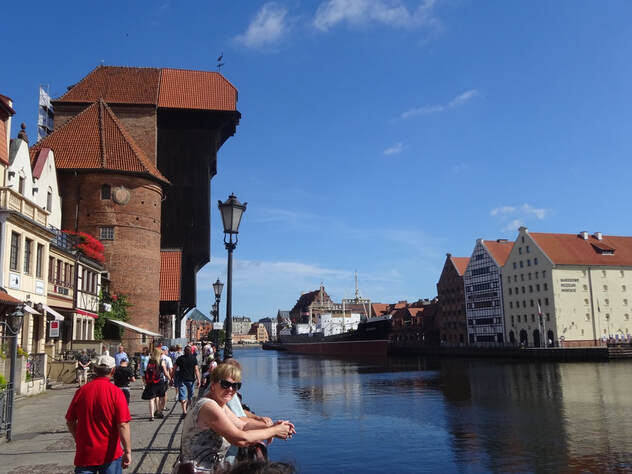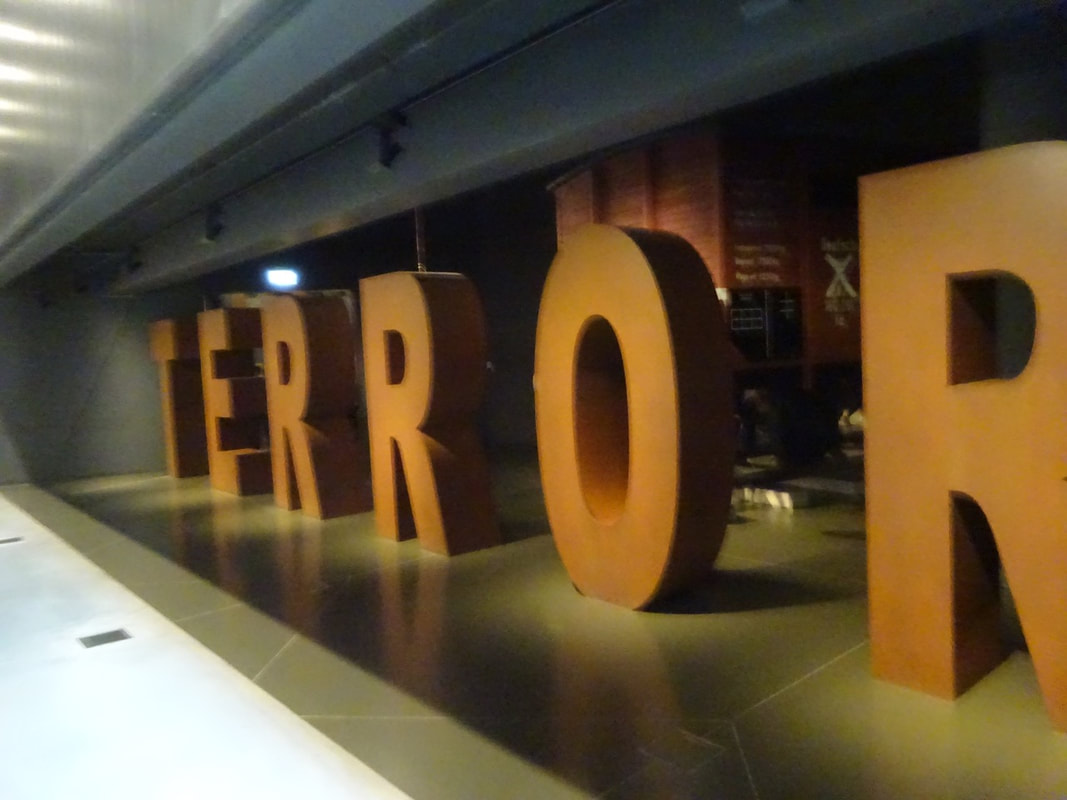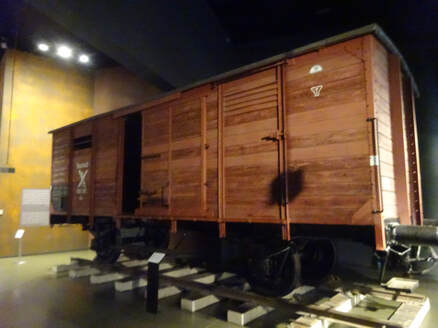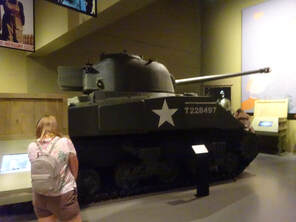Here's the view from outside the lobby of our lodging - just a short walk to the old town.
Next door, a work in progress - definitely not abandoned property, development planning and construction takes some time. It'll probably be a condo complex in a few short years.
Cool quasi-replica cars used for tours of the old town - we walked.
We continued towards the museum, seeing more good sights along the way.
The Crane is one of the defining symbols of Gdańsk, a leftover from the city’s great trading age. First mentioned in 1367, the original structure burnt down in 1442, before being rebuilt in 1442-1444. It was used to transfer cargoes and to put up masts on ships. At one time this was the biggest working crane in the world, but it also served a defensive function as one of the city gates. It had a lifting capacity of 4 tonnes to a height of 11 meters using two huge wooden wheels with a diameter of 6 meters. These wheels were originally powered by men walking inside of them to turn the lifting mechanism. It remained a working crane until the middle of the 19th century and was 80% destroyed in 1945 in The Battle for Gdańsk.
The Crane is one of the defining symbols of Gdańsk, a leftover from the city’s great trading age. First mentioned in 1367, the original structure burnt down in 1442, before being rebuilt in 1442-1444. It was used to transfer cargoes and to put up masts on ships. At one time this was the biggest working crane in the world, but it also served a defensive function as one of the city gates. It had a lifting capacity of 4 tonnes to a height of 11 meters using two huge wooden wheels with a diameter of 6 meters. These wheels were originally powered by men walking inside of them to turn the lifting mechanism. It remained a working crane until the middle of the 19th century and was 80% destroyed in 1945 in The Battle for Gdańsk.
A bronze model on the street for the blind to be able to experience it.
SS Sołdek is a retired Polish coal and ore freighter. She was the first ship built in Gdańsk after World War II (1948) and the first seagoing ship completed in Poland.
A diesel powered old sailing ship replica used for 1-hr tours.
Lift bridge lifted.
A double decker carousel - never seen one before, didn't know they are a thing.
Modern rendition of the 5-story brick house.
Finally approaching the World War II museum - the above ground portion seems to be research spaces and offices, the museum exhibits are all below ground.
The museum provides a version of Poland's experience with the war - Rick Steves said it's good, but in its development, politicization creeped in to shortchange it a bit. For us there were too many people and the audio guide had problems in playing at the right times. It was a decent museum, but the exhibits seemed to be trying to appeal too many kinds of visitors versus telling a consistently displayed history.
An American Sherman tank and a Norden bombsight.
The passenger carrier Wilhelm Gustloff sinking event remains by far the largest loss of life resulting from the sinking of a single vessel in maritime history.
This graph showing casualties as a percentage of the size of the country's population in this period shows Poland as experiencing the largest human toll in the war (notably mostly civilian). I looked at other sources, and the data seems generally correct.
Russian/Soviet T-34 tank.
The tour is done - a last look of the building - see the steps down to the exhibit spaces in the reflection.
The defense of the Polish Post Office was one of the first acts of World War II in Europe. On September 1, 1939, the Invasion of Poland was initiated by Germany when the Schleswig-Holstein battleship opened fire on the Polish-controlled harbor of Gdansk. The attack on the Polish post office followed. Polish personnel defended the building for some 15 hours against German assaults, before succumbing. This installation below is from 1979.
Lunch is served - after waiting 25 minutes for a table at this popular pirogi place (tongue twister alert, oops too late) - Tim had wild boar, and Gerri spinach and cabbage. Very good and very freshly homemade.
And another browar (brewery) is discovered.
You can have a choice here - car-boat rentals (not amphibians), or boat-boat rentals - we passed.
Modern condos/hotels built to fit in with the old town style. The original buildings were just ruble after WWII.































 RSS Feed
RSS Feed
